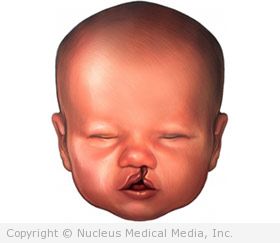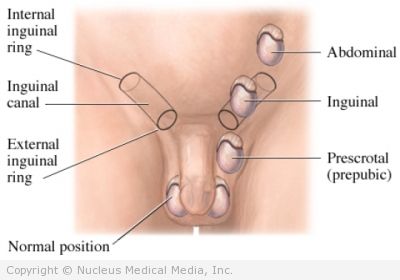Aarskog syndrome
(Aarskog-Scott Syndrome; Faciodigitogenital Dysplasia or Syndrome; Faciogenital Dysplasia; Shawl Scrotum Syndrome)
Aarskog Syndrome – Definition
Aarskog syndrome is an extremely rare genetic disorder. This syndrome causes changes in the size and shape of certain bones and cartilage in the body. The face, fingers, and toes are most often affected.
Aarskog Syndrome – Causes
Aarskog syndrome is an inherited disorder. It is caused by a gene mutation on the X chromosome. It is passed from mothers to male children. (Female children can be affected by a milder form of the disease.)
Aarskog Syndrome – Risk Factors
A risk factor is something that increases your chance of getting a disease or condition. This disorder mainly affects males.
Those at risk of inheriting Aarskog syndrome are male children of:
- Mothers who do not have the disorder, but who carry the gene for it
Aarskog Syndrome – Symptoms
The main symptoms of Aarskog syndrome are:
- Disproportionately short stature
- Abnormalities of the head and face, including:
- Rounded face
- Wide-set eyes
- Slightly slanted eyes
- Drooping eyelids
- Small nose
- Front-facing nostrils
- Underdeveloped mid-portion of the face
- Wide groove above the upper lip
- Crease below the lower lip
- Folding of the top portion of the ear
- Delayed teeth growth
- In some cases, cleft lip or palate.
Other symptoms may include:
- A malformed scrotum
- Undescended testicles
- Small, wide hands and feet
- Short fingers and toes
- In some cases, mild webbing of fingers and toes, or simian crease in palm of hand
- Abnormalities of the sternum (mildly sunken chest)
- Protruding navel
- Inguinal hernias
- Ligament problems, resulting in hyperextension of the knees
- Mild mental deficiencies (in about one-third of those affected)
- Attention deficit disoder
Aarskog Syndrome – Diagnosis
The doctor will ask about your symptoms and medical history. A physical exam will be done. The diagnosis of Aarskog syndrome is usually based on facial characteristics. It can be confirmed with genetic tests. X-rays of the face and skull can be used to help make a diagnosis.
Aarskog Syndrome – Treatment
There is no known cure for Aarskog syndrome. Treatment is limited to surgical procedures to treat conditions caused by the disorder and supportive treatment. Orthodontic treatment is often needed, as well. Researchers have located abnormalities in the FGD1 gene in people with this syndrome, and genetic testing for mutations in this gene are available.
Treatment may include:
Surgery
Conditions that may be treated with surgery include:
- Inguinal hernia
- Cleft lip or palate
- Undescended testicles
Orthodontics
In some cases, orthodontic treatment may help certain facial and dental abnormalities.
Supportive Treatment
Supportive treatment generally includes educational assistance to those afflicted with mental deficiencies. Parents often need advice and supportive treatment.
Aarskog Syndrome – Prevention
There is no known way to prevent Aarskog syndrome. If you have Aarskog syndrome or have a family history of the disorder, you can talk with a genetic counselor when deciding to have children.


